Customer Feedback Management: How to Cut Through the Noise and Build a Loyal Customer Base
Ah, customer feedback — the unsung hero of better business. The customer is always right (even when they’re wrong!). It’s also well known that reading between the lines to uncover the secrets of customer satisfaction demands empathy, acumen, and a well-oiled management system.
Many businesses grapple with customer feedback management using a hodgepodge of tools and workflows that leave them drowning in a sea of unstructured data and assumptions.
Going with a gut feeling indeed feels right 🙄. While we’re all about good feelings, vibes, and unicorns, without concrete data to draw a baseline assumption, it’s difficult — not to mention frustrating — to make consistent progress.
This article will cover the “what” and “why” behind customer feedback management and offer a list of best and worst practices to follow when mining customer feedback for your next big release.
What is customer feedback management?
Customer feedback management involves collecting, analyzing, and generating actionable insights to enhance a company’s product or service delivery. Data from surveys, reviews, and social media help companies gauge satisfaction along the customer journey and identify potential areas for improvement. It’s kind of like customer service meets detective work.
While customer feedback can come from just about anywhere (even a conversation you overheard on the street), the most common sources of it are as follows:
- Online surveys: email surveys, website surveys, Google Forms, or app surveys
- Customer reviews: online review forums
- Social media: comments, messages, and posts
- Customer interactions: live chat, phone calls
- Net Promoter Score (NPS) surveys: standardized surveys for measuring customer loyalty
- Focus groups: in-depth feedback sessions with a select group of customers
- Interactive Voice Response (IVR) systems: automated telephonic surveys after customer service interactions
At the most basic level, a systematic approach to responding to customer issues helps mitigate customer churn. It then goes a step further to enable a two-way customer feedback loop that places the customer at the center of the product development process.
When customers feel heard and understood, they’ll be far, far more likely to stick by your side.
Customer feedback management is a form of triage — it allows businesses to respond to feedback as efficiently as possible, allocating time and personnel to the most urgent issues to ensure a base level of customer satisfaction. Losing customers is expensive, especially in the digital age, since dissatisfied buyers can easily share their experiences with friends and strangers, turning more people off your products.
Customer feedback management systems go beyond simple triage. By leveraging technology to collect, categorize, and prioritize different types of feedback, they help business leaders draw insights to make informed business decisions. More accurately, customer feedback management systems use goals and systems to frame feedback in a way that leads to constructive, real-time insights that are often relevant to multiple internal teams.
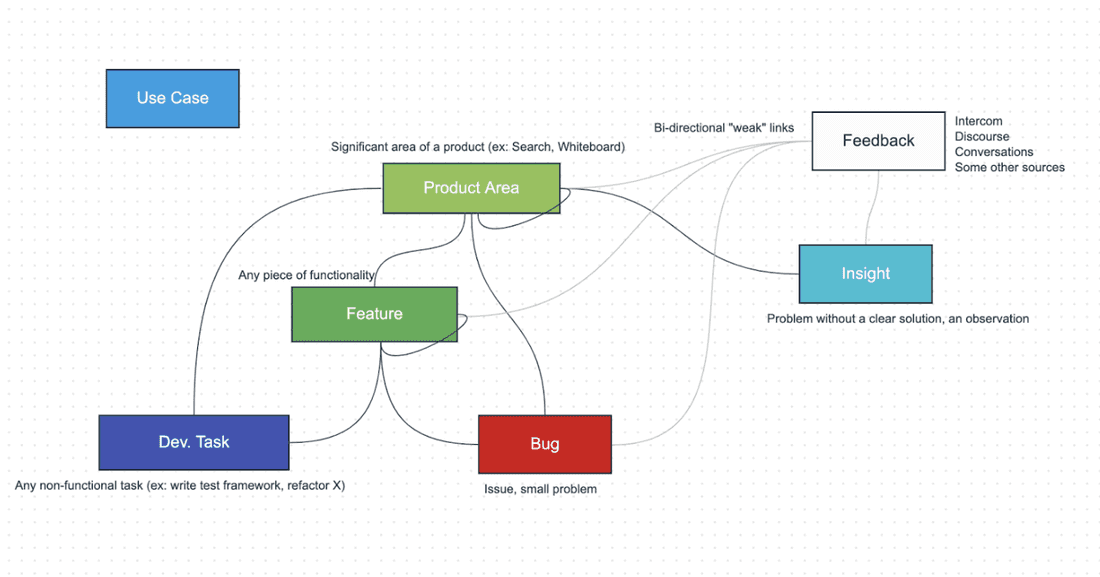
A product feedback management system is similar but geared toward elucidating insights related to a product’s design or performance. Like a customer feedback management system, a product feedback management system can help optimize workflows, technology, and best practices to achieve game-changing results.
Why does customer feedback management matter?
Customer feedback management is the lifeblood of customer experience (CX). It’s really that important because if you’re not winning over your customers, you aren’t going to survive. Bad reviews, lost business, and industry competitors will eat you alive 🦴.
But when you master CX — because your team is so adept at customer feedback management — you have a lot to look forward to, such as:
- Increased customer retention
Good CX means happy, loyal customers (or at least, not overly vocal unhappy ones). Research by Deloitte shows that good experiences translate into a willingness to spend 140% more and to stick around for years longer.
A system that analyzes feedback, personalizes product recommendations, and offers cutting-edge service is required to remain competitive in virtually any industry with an online sales model because it reveals how people feel about your company and enables you to offer good experiences at scale.
According to Forrester, the average CX quality fell for 19% of brands surveyed in 2022 to the lowest average in 17 years. Something is obviously amiss.
Here are two possibilities:
- Companies still lack effective systems to manage and analyze feedback.
- Customers are more finicky now than they were in the past.
If number two is true (and it is), you’ve got your work cut out for you.
But here’s some good news.
If companies are struggling to live up to higher expectations, rolling out the red carpet could set your brand apart and help you retain more customers, and attract people who are dissatisfied with brands that, frankly, suck at making people happy.
- Improved products and services
Customer feedback management systems serve as invaluable tools that allow businesses to iteratively refine their products or services. This allows companies to process and analyze data from more customer touchpoints, leading to better insights that shape new iterations.
Establishing feedback loops in the product development process allows teams to align products and services with customer needs, expectations, and preferences.
From enhanced features to usability, customer feedback management systems provide guidance for continued evolution and optimized offerings.
- Better customer relationships — and, in turn, better customer understanding
Customers are not just becoming more finicky — they are also, from a business perspective, more needy than ever before.
According to a recent Salesforce survey, nearly three-quarters (73%) of customers expect brands to understand their unique needs and preferences. This is both an obstacle and an opportunity.
Allocating resources toward a customer feedback management system makes for better marketing and service delivery through automated, tailored product suggestions and follow-ups. It also allows for a deeper level of market understanding.
With more interaction comes more data — and, as a result, knowledge — to guide future product or service launches.
5 customer feedback management best practices
In addition to having the right customer feedback management software, converting customer feedback into actionable steps requires workflow optimization. From C-level executives to those on the sales floor, a customer-first approach means that everyone in the company should be on board with the CX strategy.
The following best practices support a systematic approach based on concrete goals:
- Set goals for customer feedback
To go beyond simply responding to feedback, organizations looking to improve their CX should start with a set of concrete goals to frame their feedback analysis. These goals, which might include improved loyalty, increased satisfaction, or better market saturation, should be expressed as objectives and key results, or OKRs.
Let’s use customer loyalty as an example. The objective is the widest area within which customer feedback data from customer surveys or direct customer interactions can be organized. Key results include both internal actions and external results. For example, conducting 100 more surveys per month for lapsed customers would be a key result (an internal action), as would retaining 4% more customers per quarter (an external result).
Successful CX requires a foundational understanding that integrates sales, marketing, and customer service data. According to a recent CX study, 43% of organizations with more than 200 employees choose to establish a dedicated CX team, as opposed to 22% of those with fewer. CX teams not only set goals but also align other departments to reach those goals.
- Organize and prioritize feedback
Without a system to organize feedback, information becomes scattered.
Feedback can come from many sources, including satisfaction assessments, social media, and direct contact, and it can pile up fast. Without a way to organize this information quickly, it can be all but impossible to analyze it as quickly as it comes in.
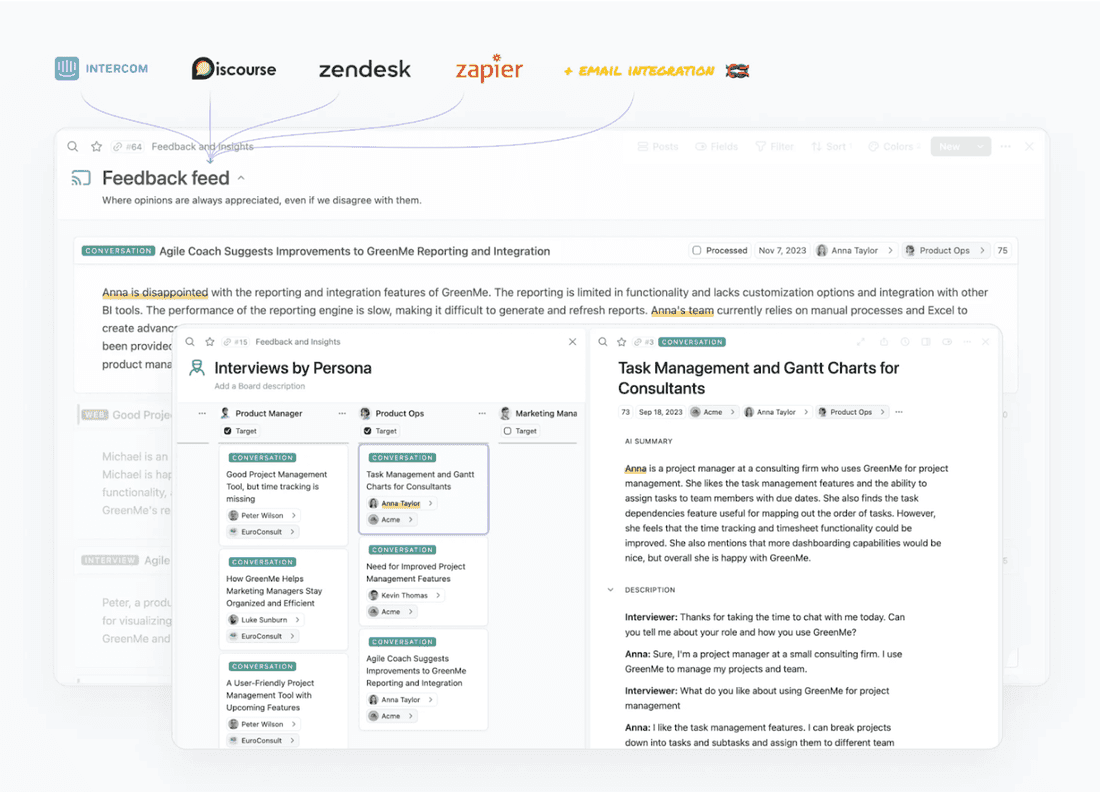
A best practice for organizing customer data is to do so according to goal buckets. Any information that can be linked to retention, for instance, could fall into a “loyalty” bucket, and product-related complaints could fall under a “development” bucket.
As you know by this point, goals include objectives as well as key results — and organizing feedback according to key results within each objective becomes more effective over time.
In addition to organizing feedback, prioritizing it is a crucial step. Bad reviews stink — in any form — but they are only useful when they come from genuine sentiment. Did the customer who left a 1-star review and 500-word rant really hate your product, or were they blowing off steam after a bad day at the office? Was the 5-star reviewer over the moon with the product itself, or was it their experience with the service staff?
Whether you deal with feedback from products or services, a CX best practice is to prioritize feedback by customer segmentation and involvement. The former could mean demographics (income, location, age), whereas the latter has more to do with how long the customer has been a customer and how many times they’ve interacted with you.
- Consolidate (with a small “c”)
Because customer feedback comes from everywhere, it’s often stored in many different places. Notion, Micro, Canny, Slack, and Jira might all have pieces of the puzzle, but these disconnected (unable to talk to each other) knowledge silos do little to paint a bigger picture.
Multitasking might be a skill (or a shortcoming). Studies show that data siloing costs CX teams an average of 20 hours per month, jumping between different tools to make sense of customer data.
If the goal of CX is to develop a 360-degree view of the customer, siloing is like putting on a pair of blinders.
Beyond that, it’s harder to draw insights when data isn’t connected. When data is consolidated (and cleaned!), it’s possible to leverage big data for a more informed strategy.
A truly consolidated customer feedback management system lets you view a customer’s demographic details, order history, interactions, and feedback in a single place — with no duplicate data or overlapping tools.
- Relate feedback to goals and share up the chain
Feedback is meaningless unless it can be put to use, right? A warm, gushy customer review feels good, of course, but implementing a strategy or iterative change that converts rants to raves feels even better.
Using feedback to make improvements, in other words, is better over the long term than “lucking out” and getting it right the first time. Lucky beginners in business can only guess what they’re doing right.
Putting feedback to use means organizing it according to overall goals and prioritizing it to identify trends. If your goal is retention, focusing on feedback from lapsed customers is a solid starting point.
What’s the most common reason customers leave? Are those with the most interaction (longer purchase history, more service calls.) saying the same thing as one-time buyers? Are there any demographic trends?
Assuming you have a robust (yet well-consolidated) knowledge base for customer data, there are potentially infinite ways to analyze data to identify trends.
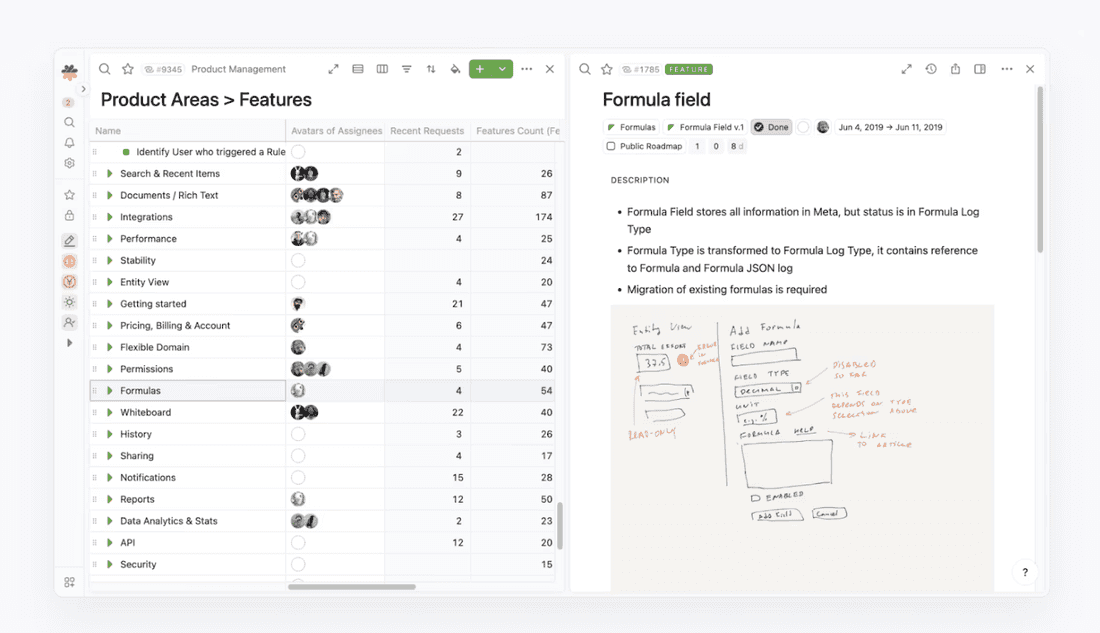
Presenting insights and actionable strategies to address customer issues — in a digestible format, of course — is the best way to get traction with management up the decision chain.
- Automate, integrate, and always follow up
Unless you’ve been living under a rock, you know AI doesn’t stand for “automate and integrate.” But with CX, it comes pretty close.
Modern customer feedback management systems use AI integrations to enhance efficiency, gain greater insights, and improve automation for more seamless CX. Fibery, for instance, uses AI to conduct sentiment analysis on customer service calls and automate routine processes (reminders, follow-ups, etc.), as well as enable chatbots to help field customer issues.
Automation helps in two big ways: accuracy and speed. Routine (read: boring) tasks, like updating mailing lists and ensuring customer data accuracy, cost humans time (and brain cells) — and bored humans easily make mistakes. Customer feedback management systems that use digital automation integrations, however, free up team members to do what they do best (like mining insights from well-structured data).
Because customer patience is probably at its lowest point now than at any other time in human history, AI is your best friend in terms of acting as a triage agent for customer issues. Customers expect near-instant follow-ups to their problems, and AI can resolve low-level issues or, when necessary, escalate them to a dedicated staff member.
There’s a reason that 63% of retail companies have shifted to using generative AI chatbots in pursuit of improved CX.
5 customer feedback management practices to avoid (a.k.a. mistakes you’d better not make)
Following best practices is a great start! Avoiding poor practices is also advisable. For best results, do both.
Here are a few customer feedback management practices that are best avoided:
- Keeping your knowledge data-siloed
Customer data comes in from all sides, both solicited and unsolicited. It not only gets stored in multiple tools (Micro, Canny, Jira, and other usual suspects) but is also often handled by entirely different teams. Data-siloing often occurs unintentionally, but it makes it difficult for any one team to see the full picture.
According to the Zendesk Customer Experience Trends Report 2023, only 22% of business leaders say their teams share data well. This worked well enough in traditional business models, but satisfying our modern, finicky customers means understanding their needs, behaviors, and preferences with a 360-degree view. Big data analysis makes this possible, but only when data silos are broken down (or merged) to form a more comprehensive, unified data set.
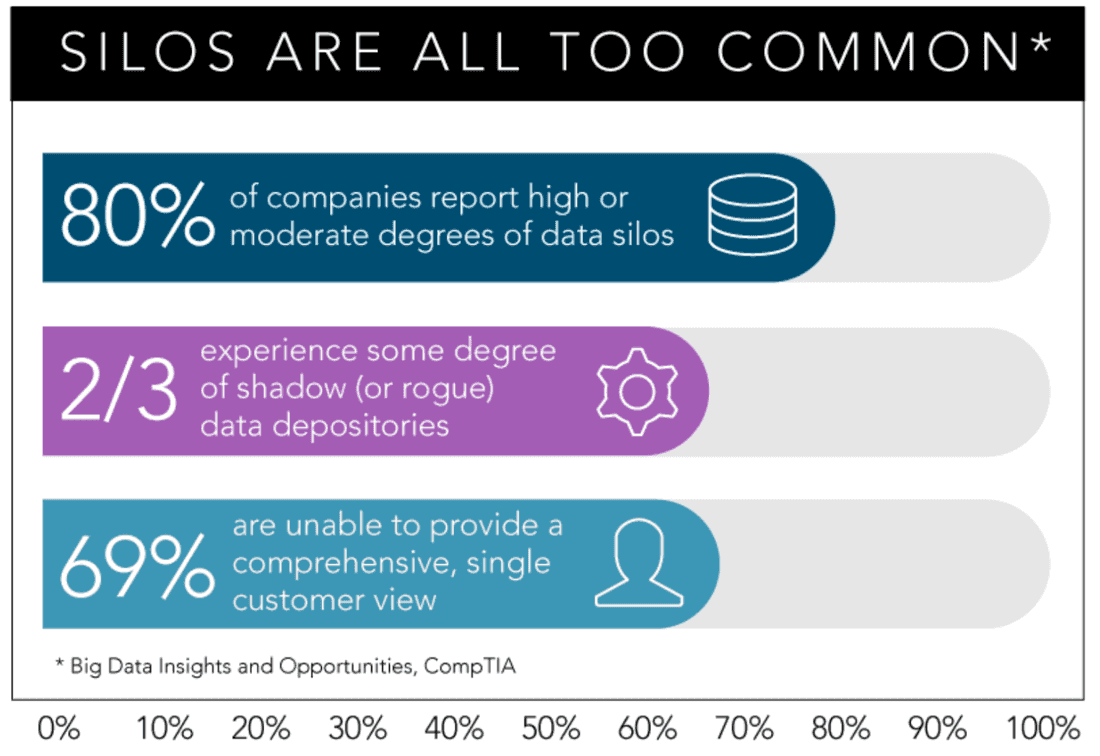
Rather than rely on expertise from disparate sources, invest in a CX approach that synthesizes data from multiple silos into a single knowledge base. This may be as simple as using software with multiple integrations or as complex as retooling standard workflows.
- Delegating and relying on your gut feeling
Delegation is a good thing, right? Well, yes and no. It helps with efficiency, yes, but it can also lead to CX enemy number one: data siloing.
It can be tempting to delegate social media feedback to the social team and product problems to engineering. After all, they know their technology the best. The problem is that when these teams of experts aren’t comparing notes to find similarities, they often miss out on the good stuff they could get from reading between the lines.
On the other hand, relying on your gut feeling can too easily be confused with “reading between the lines.” This means there’s a lack of data. A gut feeling might be enough to propose a hypothesis (e.g., we think customers might be leaving because our payment portal is clunky), but it’s not enough to define a strategy.
In other words, use a gut feeling to get data from multiple teams to look for potential answers. With robust data collection, prioritizing, and categorizing, you should at least be able to make an informed (and testable) hypothesis.
- Focusing on the feedback, not the context
“Context is everything.”
Multiple people (in different contexts)
It’s too easy to underestimate the significance when it comes to feedback from customers. Neither good nor bad reviews happen in a vacuum. How customers perceive your product is influenced by their interactions with your brand and vice-versa.
Statistically, half of your customers use four channels of communication to interact with your brand. The tone of their review, format, and intentions may be different based on the communicative channel. It may be that your most scathing reviews happen on social media, while your glowing raves are less public.
Understanding your customers’ media habits provides valuable context through which to understand what their specific feedback might mean.
Breaking down data silos (see above) is crucial in your quest for better CX. A bad review hurts — but how well did the reviewer know you and your product? Your sales team has info on purchase history, the service team can help pull reports on calls to your helpline, and marketing might be able to help form a better idea of the customer type. A bad review might start to seem more like a bad day (for the reviewer) in certain contexts.
A 360-degree picture of a customer also lets you respond to feedback in a much more personal way. Context helps to not only diagnose but also fix CX problems.
- Responding to customer complaints on an ad-hoc basis
Customers totally get it when you’re having a busy day. When they have an issue, they’re happy to wait until you have a sec.
Kidding.
Actually, 48% of consumers expect a response to social media questions and complaints within a day. Talk about pressure!
Buildup (or backlog) can become unmanageable without an automated system to rank and categorize issues.
Besides ignoring feedback entirely, the worst thing for your CX, in terms of insights lost, is to respond to feedback on an ad-hoc basis — essentially catering to the loudest voices in the room (social media). Your business has multiple types of customers, and all of them express themselves differently.
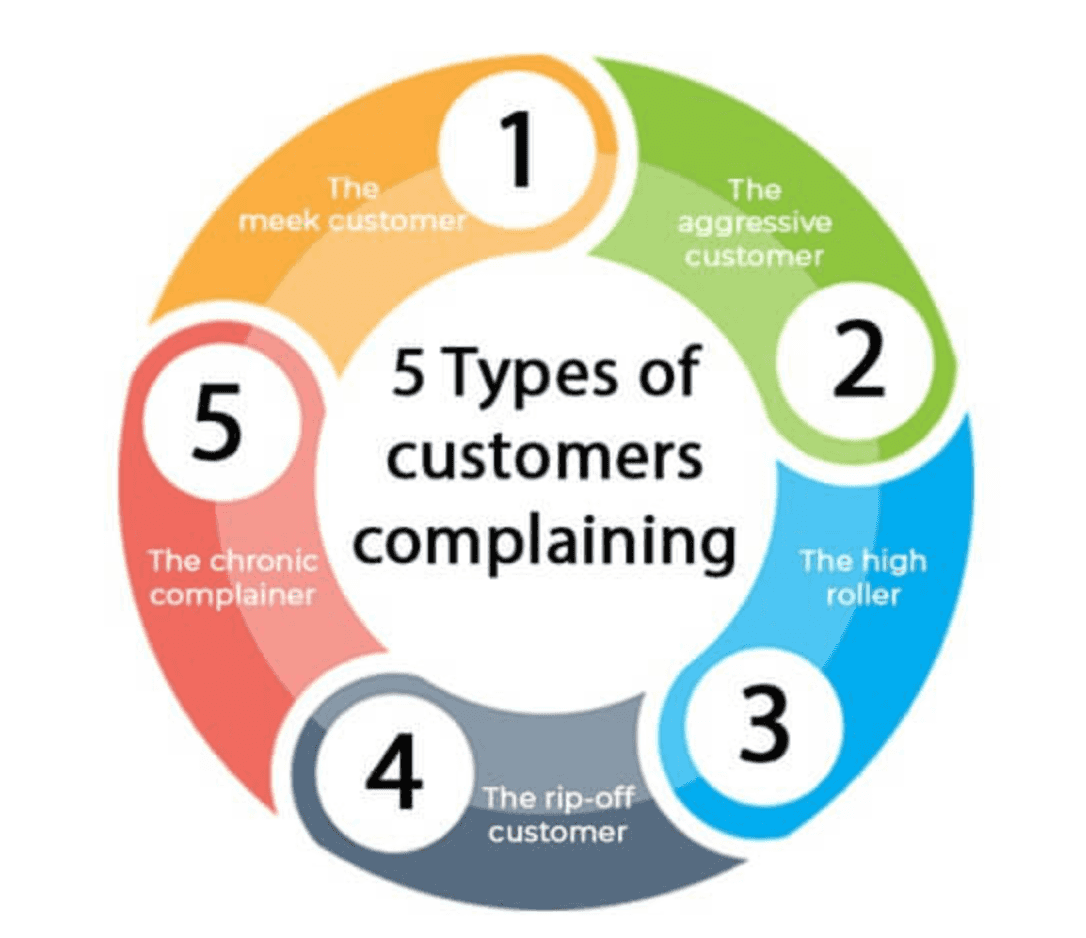
Putting out fires is short-term damage control, but without a system to understand feedback at a deeper level, this approach costs you in the long run.
- Overpromising and underdelivering
There’s nothing worse for CX than feeling like a company lied to you.
Unless the company stole from you — and then lied about it.
Promising great service while delivering satisfactory service might not seem like a lie, but trust that your customers will interpret it that way. When it comes to brand loyalty, there’s no winning on a technicality.
Expectations — specifically, managing them — are everything when it comes to CX. Set expectations too low, and you’ll scare away potential customers. And set them unrealistically high, and you’ll lose customers (who might also scare their friends away).
According to Zendesk’s CX Trends Report, 60% of customers have purchased from a brand based on the service they expect to receive. Skewing expectations for short-term gain by overpromising service delivery will only cause damage in the long term.
The PM’s hot take
Interviews, chats (like Intercom), and your (closed) community. If you are ever puzzled about where to look for those constructive, business-critical pieces of feedback, these three places should be your go-to.
The best CX systems turn noise into knowledge
With CX expectations at an all-time high and so much digital input streaming in from numerous sources, being able to read the tea leaves through customer feedback is a sink-or-swim deal for the modern enterprise.
This means using Fibery to build an AI-enhanced, centralized customer feedback management tool is a wise idea. Pair it with a well-devised workflow and set of best practices, and you’ll be good to go.
Embrace the CX future, harness the power of digitally integrated (and sorted) feedback, and let Fibery take your product or service offerings to new, unexplored heights.
Try Fibery for free to start accumulating and managing customer feedback in a single AI-enhanced platform.
Psst... Wanna try Fibery? 👀
Infinitely flexible product discovery & development platform.